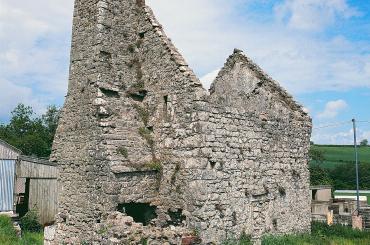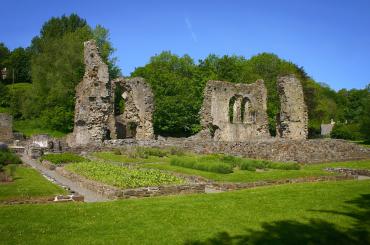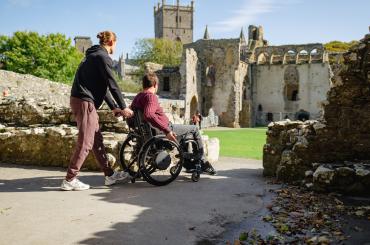Lamphey Bishop's Palace

A bishop’s tipple
Life couldn’t have been that hard for the medieval bishops of St Davids. These worldly, wealthy, influential men enjoyed their home comforts — as you’ll see when you wander around Lamphey’s palatial grounds, mainly the work of the dynamic Henry de Gower, bishop of St Davids from 1328 to 1347.
The bishops used Lamphey as a country retreat, an escape from the burdens of Church and State. Although just a short distance from St Davids itself, it was a million miles away from the simple, strict life led by austere ‘Dewi the Waterdrinker’, St David, patron saint of Wales, who lived many centuries earlier.
The medieval prelates would have led the privileged lives of country gentlemen, enjoying the luxuries of private accommodation, a grand great hall, first-floor chamber, fishponds, fruit orchards, vegetable gardens and 144-acre/58ha park.
Opening times & prices
Opening times
| 1st April - 31st March | 10am-4pm |
|---|---|
|
Our visitor centre is currently closed – please enter via the side gate. Last admission 30 minutes before closing Closed 24, 25, 26 December and 1 January |
|
Visitor information
Car park
Parking for up to 15 cars with a lay-by across the road from the palace.
Disabled person access
Access to the grounds is through a side gate.
A gravel lane to the side of the palace leads to the gate.
There is a ramp leading from the rear gate into the grounds.
Dogs welcome
Dogs on short leads welcome to access ground floor levels of the site.
Walking difficulty
Terrain: Level 1 – Accessible
Venue hire
This site is available to hire for events, filming and exhibitions.
Drone policy
Please read our policy information about flying drones at Cadw monuments: read the guidance
No smoking
Smoking is not permitted.
Health & Safety
The grounds here are immaculate, offering easy access to most of the palace through a mix of relatively flat grass and chippings.
Modern and historic steps provide a route to the upper levels of the palace, please use handrails provided. These may be naturally wet during poor weather conditions. Take care on historic steps as they are naturally uneven in some sections.
You will not lose out on the experience of not being able to access the upper levels, the view from the ground clearly displays the significance of this monument.
As with all ancient monuments there is always a risk of stones being dislodged in bad weather, however, we manage this through extensive monitoring.
Climbing may result in serious injury.
There are several wild plants and flowers, although these are great pollinators, they may be poisonous to visitors and animals, we strongly advise you not to touch or allow dogs to eat any vegetation.
Please watch our health & safety film before visiting Cadw sites.
Iechyd a Diogelwch / Health and Safety
Please report any anti-social behaviour such as climbing, setting fires, graffiti etc. to CadwAccidentsReports@gov.wales
The following signs can be found around the site at key areas of risk, please pay attention where appropriate.
Steep and uneven steps
Falls from height
Slippery or uneven surfaces
Falling masonry
Directions
Google MapPostcode SA71 5NT
what3words: ///face.imposes.spectacle
Related
Unlimited access to Wales' past
Join Cadw for as little as £2.00 a month and gain unlimited access to over 100 historical sites.
Enjoy the many benefits of Cadw membership
- 10% off Cadw gift shops
- 50% off entry to English Heritage and Historic Scotland sites
- FREE entry to English Heritage and Historic Scotland on renewal
- FREE entry to Manx National Heritage properties
- FREE membership pack including car sticker and full colour map


